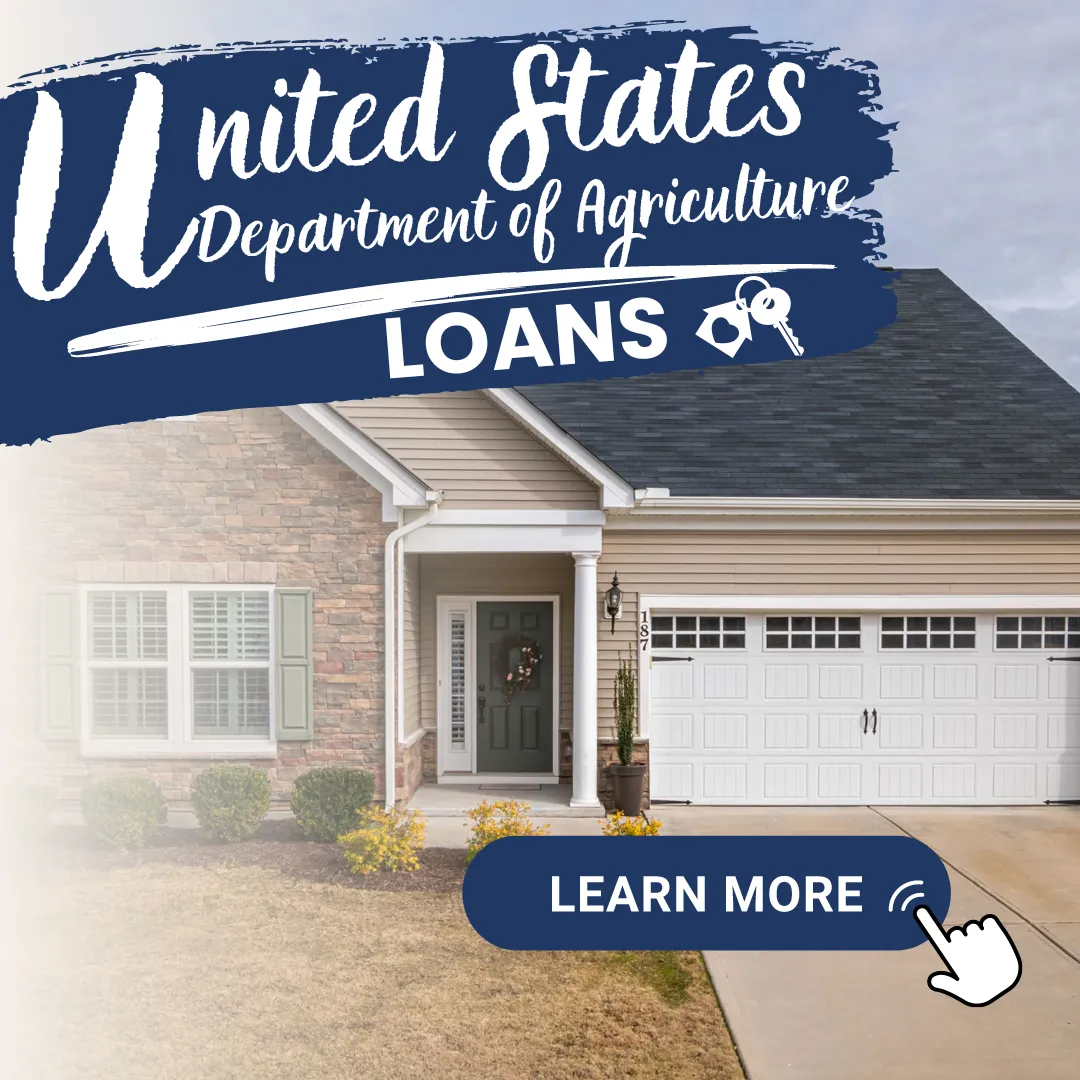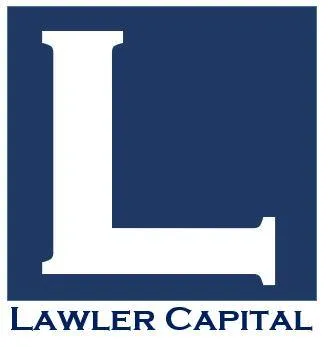USDA Loans
USDA loans, offered by the United States Department of Agriculture, are designed to help low- to moderate-income families achieve homeownership in rural and suburban areas. These loans aim to stimulate growth and improve the quality of life in these communities. The USDA loan program provides a no-down-payment option, making it an attractive choice for eligible homebuyers.

Benefits of USDA Loans
No Down Payment Requirement
✅100% Financing: USDA loans offer 100% financing, meaning qualified buyers can purchase a home without making a down payment, significantly reducing the initial cost of homeownership.
Low Mortgage Insurance Rates
✅Affordable Insurance: USDA loans feature lower mortgage insurance rates compared to conventional loans, resulting in lower monthly payments.
✅Upfront Guarantee Fee: A one-time upfront fee, typically 1% of the loan amount, is required but can be financed into the loan.
✅Annual Fee: An annual fee, usually around 0.35% of the loan balance, is paid monthly and is often lower than private mortgage insurance (PMI) rates on conventional loans.
Competitive Interest Rates
✅Fixed Rates: USDA loans generally offer competitive fixed interest rates, which can be lower than rates on conventional loans. This helps borrowers maintain predictable and affordable monthly payments.
Flexible Credit Guidelines
✅Lenient Credit Requirements: While a credit score of at least 640 is preferred by most lenders, the USDA program allows for more flexible credit guidelines, making it accessible to borrowers with less-than-perfect credit.
Eligibility Criteria
Income Limits
✅Moderate Income Limits: USDA loans are intended for individuals and families with moderate incomes. The income limits vary by location and household size. Generally, the household income should not exceed 115% of the median income for the area.
Property Location Requirements
✅Rural and Suburban Areas: Properties must be located in eligible rural or suburban areas, as defined by the USDA. These areas are typically outside major metropolitan regions. You can check the eligibility of a specific address on the USDA’s website.
Additional Eligibility Requirements
✅Credit Requirements: While there is no minimum credit score requirement set by the USDA, most lenders prefer a credit score of at least 640.
✅Debt-to-Income Ratio (DTI): Generally, a DTI ratio of 41% or less is preferred, though higher ratios may be acceptable with compensating factors such as strong credit history or savings.
✅U.S. Citizenship: Applicants must be U.S. citizens, U.S. non-citizen nationals, or Qualified Aliens.
✅Stable Income: Borrowers must demonstrate a stable and dependable income, typically verified through employment history and income documentation.
Property Requirements
✅Primary Residence: The property must be used as the borrower's primary residence.
✅Condition of Property: The home must meet USDA property standards, ensuring it is safe, sanitary, and structurally sound.
Explanation of USDA Guarantee Fees
USDA loans come with guarantee fees, which help fund the loan program and are much lower compared to conventional loan insurance costs. These fees include:
Upfront Guarantee Fee:
✅Amount: Typically 1% of the loan amount.
✅Payment: This fee can be paid at closing or rolled into the loan amount, allowing borrowers to finance it over the life of the loan.
Annual Fee:
✅Amount: Usually around 0.35% of the remaining loan balance.
✅Payment: Paid monthly as part of the mortgage payment, this fee decreases each year as the loan balance reduces.
Additional Considerations
Loan Terms
✅Fixed Terms: USDA loans typically offer 30-year fixed-rate terms, providing long-term stability and predictable payments.
No Prepayment Penalties
✅Flexibility: USDA loans do not have prepayment penalties, allowing borrowers to pay off their loan early without incurring additional fees.
Refinancing Options
✅Streamlined Refinancing: USDA offers streamlined refinancing options for existing USDA loan holders, making it easier to take advantage of lower interest rates and reduce monthly payments.
Eligible Loan Costs
✅Closing Costs: USDA loans allow for the financing of eligible closing costs into the loan amount, reducing the upfront out-of-pocket expenses for buyers.
By considering these additional details, potential borrowers can have a comprehensive understanding of USDA loans and how they might benefit from this program.
